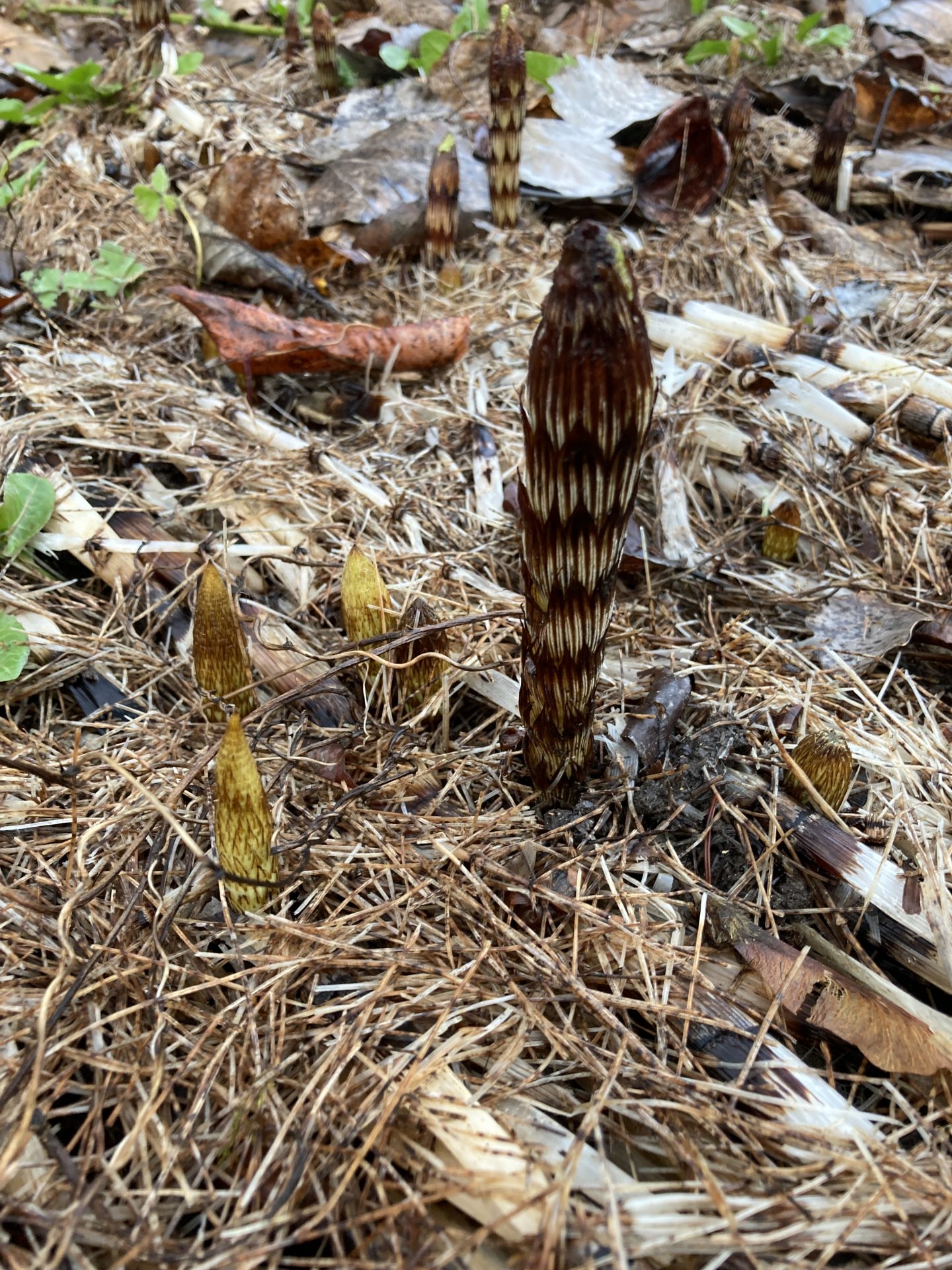April 2022 Plant Profile: Field Horsetail: Weed or Wonder?
 Horsetail, a plant that Seattle area gardeners love to hate. Have it in your garden? You have likely been fighting it for years. But this plant is more than just a weed. Field horsetail, Equisetum arvense, is a tenacious perennial native to the temperate and arctic regions across the northern hemisphere, including the Pacific Northwest.
Horsetail, a plant that Seattle area gardeners love to hate. Have it in your garden? You have likely been fighting it for years. But this plant is more than just a weed. Field horsetail, Equisetum arvense, is a tenacious perennial native to the temperate and arctic regions across the northern hemisphere, including the Pacific Northwest.
In early spring I often encounter visitors wondering about the otherworldly-looking reproductive stems of field horsetail. These pale cream and tan stems do not photosynthesize, but release spores and quickly die back. These are quickly followed by the sterile green stems with whorls of fine leaves which last until winter. Both the stems and leaves in this form photosynthesize, sending energy down into their extensive root system. The roots of field horsetail can reach six feet in depth!
Although horsetails are often considered a weed in the garden, they are ancient plants, dating back to a time when dinosaurs roamed the planet. They are closely related to ferns, and probably emerged around 200 million years ago. Today many animals use the plants as food including geese, grizzly bears, and moose!
An incredible array of bioactive chemicals are present in field horsetail, and the plants are used medicinally by humans in every region it grows. Field horsetail takes up silica from the soil, making the tissue rough in texture. Many Indigenous groups have taken advantage of the abrasive stems for scrubbing, scouring, and polishing. In Washington State the Okanagan-Colville use the stems like an emery board to polish fingernails. More recent research has found that chemicals in field horsetail act as a powerful anti-corrosive and can reduce rust in desalinization facilities.
Field horsetail thrives in disturbed areas, and was likely much less widespread in the Seattle area before urban development. In areas with nitrogen-poor soils and repeated soil disturbance such as tilling, field horsetail will quickly become the dominant species.
At the Arboretum we have gardens where we weed field horsetail to keep it from outcompeting our collection plants, and we also have natural areas, especially along Arboretum Creek, where we consider it part of the native ecosystem. As a weed, horsetail is a mighty foe. Its dense and deep root system can regenerate stems after herbicide application or mowing. Broken root fragments from hand-weeding will result in new plants. The best technique I’ve found is to slowly starve the roots of energy by snipping or plucking off the stems at ground level every couple weeks during the growing season.
Whether you are weeding it out of your garden, or noticing the reproductive stems emerging along Arboretum Creek, take a moment to appreciate the ancient origins of this native species.

Family: Equisetaceae
Genus: Equisetum
Species: arvense
Origin: Temperate and arctic regions throughout the northern hemisphere
Height and Spread: Up to 2 feet tall
Bloom time: Spore producing stems emerge in early spring and die back shortly thereafter
Location: All over! Especially around and along Arboretum Creek.